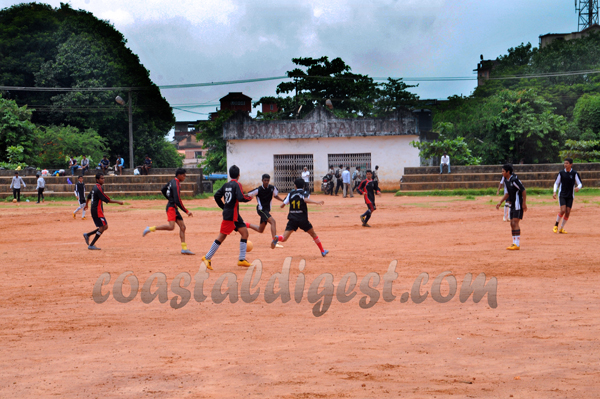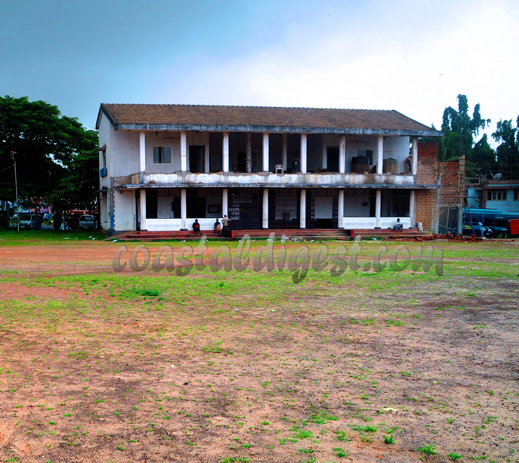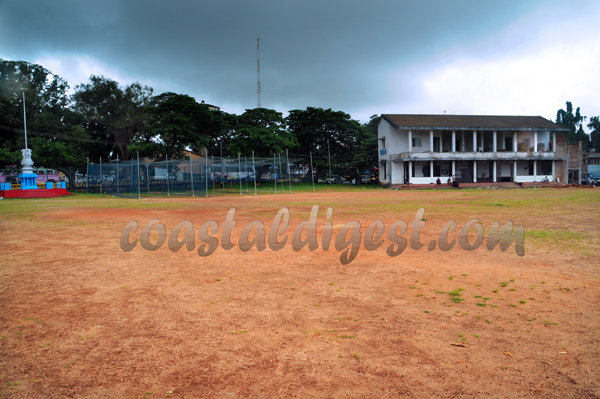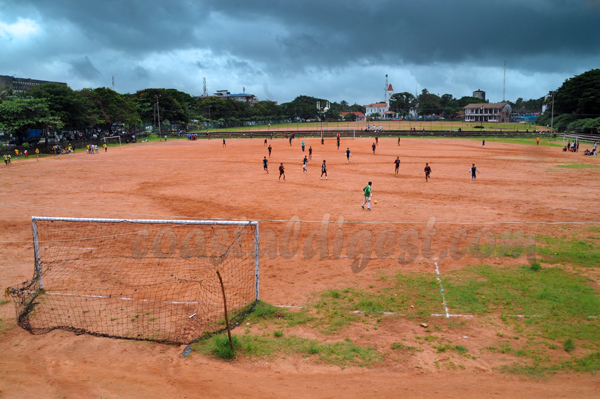
Mangalore, September 20: While the old-fashioned cricket pavilion at Nehru Maidan in the heart of the city is in the process of getting a face-lift, the football pavilion just meters away from it seems to be completely disregarded by the Mangalore City Corporation.
The cricket pavilion which has a history of 60 years was inaugurated by then Prime Minister of India Pandit Jawaharlal Nehru in the year 1951, which led to the christening of the ground after him. Back then, it was the only ground in the city which was allotted especially for sporting activities. The pavilion has stood as a witness to plenty of cricket matches and tournaments over the years. The Maidan cricket ground had even hosted the first national-level Ranji Trophy cricket championship in the season of 1957-58.
Speaking to Coastaldigest.com, Kasturi Balakrishna Pai, Manager of Dakshina Kannada Cricket Association (DKCA), said that once the Mangala Stadium was constructed in the city and got into use, all the athletic activities were shifted to that venue and the state of the pavilion gradually declined.
He said that the cricket ground, which is an 8 x 9 cents piece of land, was handed over to DKCA in the year 1997 by Bharath Lal, the-then Administrator of Corporation (Deputy Commissioner). By then, the pavilion had gone to the dogs. Sufficient funds were required to develop it. There were 62 clubs and institutions affiliated to the association, and various league matches were conducted by DKCA each year, he said.
He said that following their plea to the MCC, Rs 13.80 lakh were sanctioned in the first stage in 2005 for the pavilion repair work. “But the planning was not enough. The construction work which had started in 2006 came to a halt following lack of interest shown by the MCC. Our pleas again fell on deaf ears,” he said.
After five years, it was only in April 2012 that MCC took a renewed interest in the pavilion, and sanctioned Rs 5 lakh for its renovation.
“Already, the staircase has been completed, and the electrical as well as flooring work will be done in a month,” said Mr Pai. The pavilion would include a video-analysis room, gymnasium for children, a rest room for players, as well as washrooms.
If all things go well, the cricket pavilion will be inaugurated on Kannada Rajyotsava Day which falls on November 1, this year according to K Harish Kumar, MCC Commissioner.
Just a few meters away, the football pavilion stands in a sad state of neglect, which wouldn’t get a second glance from a passer-by.
D M Aslam, Chairman of Dakshina Kannada Football Association, said that despite repeated appeals, the MCC did not take any steps to develop the pavilion. There are no proper dressing rooms for the players. Even the ground needs to be developed. Grass is of utmost importance in a football field. It is dangerous for the players to practice in its current state as there is always a possibility of getting injured, he said.
Criticising the apathy and lack of interest shown by the civic body, Mr Aslam said that both the cricket and football ground faced the same problems. “Although the grounds are meant for the use of sports activities, they are given for religious and cultural functions without our permission. The Football Association has been repeatedly placing its demands in front of MCC Commissioner from the past five years,” he said.
The issue of improper football ground was raised by the Association with the State Sports Minister M P Appachu Ranjan at the review meeting at the Deputy Commissioner’s office recently. Mr Aslam had appealed to the Minister not to allow the ground at Nehru Maidan to be used for other purposes. Despite repeated attempts with the Deputy Commissioner or the MCC Commissioner, no effort had been made so far to improve the ground or the pavilion, he alleged.
On the other hand, Mr Harish Kumar denied that the MCC had received any such proposal by the Football Association. As of now, there are no plans regarding the football ground, he said.
He said that there were plans of a new 30-acre international football ground in Mangalore, which was still in its infancy stage.
It remains to be seen whether the regional football players actually do receive inspiration in some way.




Photos by Ahmed Anwar







Comments
Add new comment